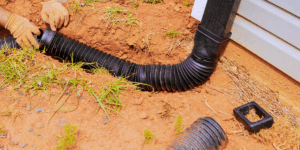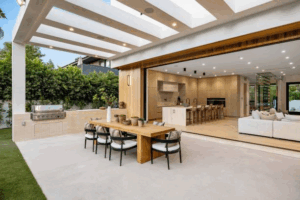Cockroach Problem in Arlington Apartments—and How to Solve It

A new unwanted reality for Arlington apartment residents, roaches, are becoming more frequent in multi-unit structures and complexes city-wide. These tenacious little bugs do not pop up overnight; they flourish in Arlington’s warm, humid climate, especially in the summertime. Things get more complicated in apartment buildings where common walls, plumbing systems, and ventilation systems act as ideal expressways for these unwanted guests to propagate from unit to unit.
If you have seen even one cockroach scuttling across your kitchen floor, believe us, there is a far more serious problem lurking within. Timely and professional pest control services can help you deal with these infestations before they get out of hand and ruin your well-being and peace of mind. Trusted pest control services in Arlington can help you identify the root cause of cockroach infestation in your apartment and permanently get rid of them.
Why are cockroaches becoming a significant problem for Arlington Apartments?
It is this unique combination of urban environment that creates the conditions for a cockroach infestation in Arlington. These pests breed well in those conditions, with the city hovering at 65-70% humidity levels on average during peak summer months. Cockroach-related complaints in apartment buildings rose 23% over the past two years, according to recent Arlington County health department reports.
The abundance of residents in Arlington’s apartment buildings, the fact that those buildings have aged, and the infrastructure may create multiple entry points and chances for a meal. Because their interconnected plumbing and electrical systems serve as cockroach highways, many of the apartment buildings in Arlington were built in the 1970s and 1980s. Furthermore, Arlington has access to the Potomac River and a lot of parks, which keep outdoor cockroaches close by, only waiting for the opportunity to come indoors when it becomes favorable or when food sources outdoors disappear.
Common Reasons Cockroaches Come Inside Your House
- Even the smallest of food particles can attract cockroaches looking for a quick meal, so keeping food crumbs on counters, floors, or inside cabinets makes roaches feel at home.
- Damp pipes, dripping faucets, and wet bathrooms provide cockroaches with all the moisture they need to live
- Not only do these things give cockroaches food, but they also provide shelter, making any storage space highly coveted land for cockroaches.
- Dog and cat food bowls left out become the all-you-can-eat protein buffet that cockroaches can never resist eating
- Sealed trash cans and sticky recycling bins provide excellent sources of food and breeding grounds
- Small openings in weather stripping, door frames, and window sills are common entry points for outdoor populations
How Can You Protect Your Apartment From Their Invasion?
The first step in prevention is to remove the trio of things cockroaches need the most, which are food, water, and shelter. Prevent roaches from smelling the tiniest crumb by wiping down all surfaces after cooking and keeping food sealed in airtight containers.
If your home has moisture problems, resolve them immediately, for example, by repairing leaky faucets and using exhaust fans in bathrooms. Use caulk to seal potential entry points around baseboards, pipes, and electrical outlets, especially where those utilities enter your unit from other apartments.
In your apartment, gel baits or boric acid can be used in locations where you have seen activity. Still, because of the nature of apartments, the cockroaches can move over to the other units and come back, so stand-alone solutions are not as effective as whole-building solutions.
However, if you can see cockroaches during the day or find where they lay their eggs or smell the musty smell in your apartment, this means that the pest problem has become severe. Green Pest Services and similar companies know what Arlington apartment residents face when it comes to pests, and their multi-faceted treatment plans attack both individual apartment units and common areas. Because re-infestation from neighboring units is a very real threat that can only be mitigated through professional building-wide management, professional services also offer follow-up treatments and monitoring.








